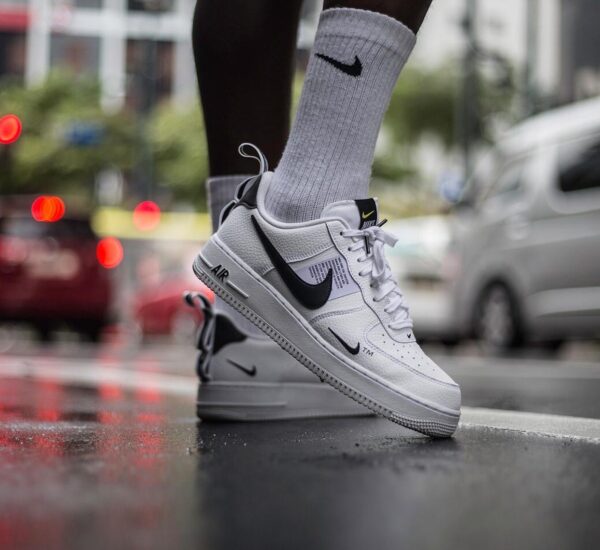Facebook Ads and influencer marketing are two of the most powerful digital marketing tools available today. When used separately, they can drive brand awareness, engagement, and conversions. But when combined? The results can be game-changing.
Many brands focus on one or the other—either investing heavily in Facebook Ads or pouring their budget into influencer partnerships. However, smart marketers are blending the two strategies to create high-performing, highly targeted campaigns that drive explosive growth.
In this guide, we’ll cover:
- Why influencer content is perfectly suited for Facebook Ads
- The psychology behind why influencer ads work better than traditional brand ads
- A step-by-step strategy to integrate influencers into your Facebook advertising
- The biggest mistakes brands make when combining influencer marketing with paid ads
If you’re tired of seeing mediocre results from Facebook Ads and want a more authentic, high-converting approach, this is for you.
Why Influencer Marketing and Facebook Ads Are a Perfect Match
Facebook Ads are incredibly effective when done right, but they come with one major challenge: ad fatigue and trust issues. Consumers are bombarded with ads every day, and many people have learned to ignore or distrust traditional brand messaging.
Influencer marketing, on the other hand, thrives on trust and authenticity. Social media users follow influencers because they like them, trust them, and see them as relatable. When an influencer promotes a product, it feels more like a personal recommendation rather than a hard sell.
By combining these two forces—Facebook’s precise targeting and the credibility of influencers—you create an ad strategy that feels organic, reaches the right people, and drives real engagement and conversions.
The Psychology Behind Why Influencer Ads Work Better
People trust people, not brands. Studies show that 92% of consumers trust recommendations from individuals over companies. Traditional Facebook Ads often struggle to build that level of trust, but influencer-generated ads leverage:
- Social proof: If someone’s favourite influencer is using a product, they assume it’s worth trying.
- Authenticity: Influencer content often feels natural and unscripted, making it more engaging.
- Community effect: People engage more when they see someone they follow using a product.
- Ad blindness reduction: Influencer-created ads look less like ads and more like native content.
This is why influencer-led Facebook Ads often outperform traditional brand ads in click-through rate (CTR), engagement, and conversions.
How to Integrate Influencer Marketing into Facebook Ads for Maximum Impact
Now that we understand why influencer-generated content is so effective, let’s break down a step-by-step strategy for combining influencer marketing with Facebook Ads.
Step 1: Partner with the Right Influencers
Not all influencers will work for your brand. It’s crucial to find influencers who:
- Align with your brand values and audience. Their followers should be the same people you want to reach with your ads.
- Have engaged, authentic communities. High follower counts mean nothing if their engagement is low or fake.
- Already create high-quality content. This ensures your ads look polished and professional.
- Have experience with brand collaborations. Experienced influencers understand how to create content that both engages and converts.
Don’t just look at follower count—a smaller, highly engaged audience is far more valuable than a large, passive one. Micro-influencers (10K-100K followers) often outperform larger influencers because their followers trust them more.
Step 2: Have Influencers Create Native-Style Content
One of the biggest mistakes brands make is forcing influencers to create overly scripted, commercial-style content. The key to success is letting influencers create content in their natural style so that it feels organic.
The best influencer ads often look like regular posts, stories, or videos, featuring:
- Casual, real-world product use (not overly polished studio shots)
- First-person testimonials and storytelling (“I’ve been using this for a week, and here’s what happened…”)
- Behind-the-scenes footage or unboxings
- Authentic reactions rather than corporate messaging
Remember: The best influencer content doesn’t feel like an ad. It feels like a trusted friend making a recommendation.
Step 3: Turn High-Performing Influencer Content into Facebook Ads
Once an influencer posts about your product, you don’t want that content to disappear into the social media void. Instead, take the best-performing influencer content and use it as a paid Facebook Ad.
Here’s how to do it effectively:
- Use Facebook’s Branded Content Ads
Facebook’s Branded Content Ads allow brands to run influencer-generated content as official paid ads under the influencer’s name. This means:
- The ad still appears to come from the influencer (not the brand), preserving trust.
- You get full access to Facebook’s targeting tools, allowing you to amplify the reach.
- You can A/B test different influencer creatives to see which performs best.
- Retarget Engaged Users with Influencer Content
Once someone engages with an influencer ad, don’t let them forget about your brand. Set up retargeting campaigns to keep them in your funnel.
For example:
- If someone watches an influencer video ad, retarget them with a special offer ad featuring the same influencer.
- If someone clicks but doesn’t buy, show them a testimonial or review ad to reinforce trust.
By layering influencer content into your Facebook Ads retargeting strategy, you keep your brand top of mind without feeling pushy.
Step 4: Leverage Influencer-Generated Content for Lookalike Audiences
Facebook’s Lookalike Audiences allow you to find new customers who are similar to your existing buyers. But here’s where influencer marketing makes it even more powerful:
- Run influencer ads to their existing audience first.
- Collect data on who engages and converts.
- Use that data to build a Lookalike Audience of similar people.
- Show your influencer ads to this new, high-potential audience.
This method scales your campaign beyond the influencer’s direct followers, helping you reach thousands (or millions) of new potential customers who are likely to convert.
Common Mistakes to Avoid When Combining Facebook Ads & Influencer Marketing
Even though this strategy is incredibly effective, many brands get it wrong. Here are the biggest mistakes to watch out for:
- Choosing Influencers Based on Follower Count Alone
A large following doesn’t mean an influencer will drive results. Always check engagement rates, audience demographics, and past collaborations before partnering.
- Forcing Influencers to Sound Like a Brand Ad
If the content feels forced or scripted, audiences will see right through it. Let influencers create in their own voice and style.
- Not Testing Different Creatives
What works for one influencer might not work for another. Always test multiple pieces of content to see what resonates best with your audience.
- Neglecting Retargeting
Don’t just use influencer content for awareness. Retarget engaged users with strategic follow-up ads to push them toward conversion.
The Future of Facebook Ads is Influencer-Powered
Facebook Ads alone are not enough to cut through the noise anymore. Consumers trust influencers far more than traditional brand messaging, and by combining influencer content with Facebook’s powerful advertising platform, you can create campaigns that feel authentic, engaging, and highly effective.
By following this strategy, you’ll not only boost your ROI on Facebook Ads but also build deeper relationships with your target audience—turning passive scrollers into loyal customers.
Looking to scale your Facebook Ad strategy with influencer marketing? At RS Digital, we help brands integrate influencers into paid social campaigns for maximum impact. Get in touch today and let’s start growing your brand the smart way. Contact us today through www.RSDigital.co.uk enquiry form or call 01282 452096.


